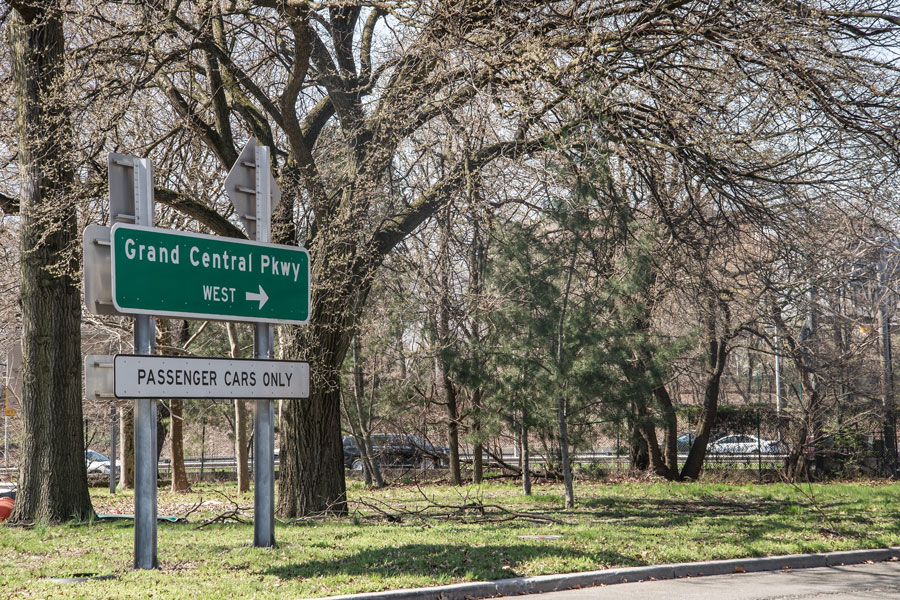Grand Central Parkway

The Grand Central Parkway (GCP) is one of New York City’s most important highways, running east–west across Queens and serving as a vital connector between Manhattan, Long Island, and two major airports. Stretching approximately 14.6 miles, the parkway links the Triborough (Robert F. Kennedy) Bridge to the Nassau County line, where it continues as the Northern State Parkway. For Long Island drivers, it provides direct access to LaGuardia Airport, JFK Airport (via the Van Wyck Expressway), Citi Field, Flushing Meadows–Corona Park, and beyond.
History
- Construction: Planned in the 1920s and built in the 1930s under Robert Moses as part of New York’s growing parkway system.
- Opening: Sections were completed and opened between 1931 and 1936.
- Design: Originally designed as a scenic route, with curving roadways and landscaped medians, reserved for passenger cars only.
- Modernization: Over the decades, the GCP has been widened, reconfigured at interchanges, and adapted to modern traffic volumes.
Route and Significance
- Western Terminus: Begins at the Robert F. Kennedy (Triborough) Bridge in Astoria, Queens.
- Eastern Terminus: Continues as the Northern State Parkway at the Queens–Nassau County border.
- Length: About 14.6 miles.
- Restrictions: Trucks, buses, and commercial vehicles are prohibited.
The Grand Central Parkway provides critical connections for:
- LaGuardia Airport – runs directly along the airport with several access ramps.
- JFK Airport – connects via the Van Wyck Expressway (I-678).
- Long Island – transitions into the Northern State Parkway for travel deeper into Nassau and Suffolk Counties.
- Manhattan & The Bronx – accessible via the Triborough Bridge.
- Queens Attractions – passes Citi Field, Flushing Meadows–Corona Park, and the USTA Billie Jean King National Tennis Center.
Exits (West to East)
| Exit | Destinations |
|---|---|
| 1 | Robert F. Kennedy Bridge (I-278), Manhattan, Bronx |
| 3 | Hoyt Avenue / 31st Street – Astoria |
| 4 | Brooklyn-Queens Expressway (I-278) – Brooklyn, Staten Island |
| 5 | Northern Boulevard (NY 25A) – Woodside, Flushing |
| 6 | Astoria Boulevard / 82nd Street – LaGuardia Airport access |
| 7 | LaGuardia Airport Terminals B, C, D |
| 8 | 94th Street / Ditmars Boulevard – LaGuardia Airport access |
| 9 | 111th Street – Corona, Flushing Meadows–Corona Park |
| 10 | Grand Central Parkway East / Northern Boulevard (Citi Field, Flushing Meadows) |
| 11 | Van Wyck Expressway (I-678) – JFK Airport, Southern Queens |
| 12A / 12B | Long Island Expressway (I-495) – Midtown Tunnel, Eastern Long Island |
| 13 | Jewel Avenue – Forest Hills, Kew Gardens |
| 14 | Union Turnpike – Forest Hills, Queens Borough Hall |
| 15 | Jackie Robinson Parkway – Brooklyn, Eastern Queens |
| 16 | Francis Lewis Boulevard – Fresh Meadows |
| 17 | Cross Island Parkway – Whitestone & Throgs Neck Bridges, Long Island |
| 18 | Continuation into Northern State Parkway – Nassau and Suffolk Counties |
Notable Facts
- Runs directly alongside Flushing Meadows–Corona Park, site of the 1939 and 1964 World’s Fairs.
- Provides direct highway access to both LaGuardia and JFK airports.
- Known for heavy congestion, especially near the Kew Gardens Interchange and LaGuardia Airport.
- Scenic stretches remain near eastern Queens, echoing its parkway design origins.
Area Snapshot
| Feature | Details |
|---|---|
| Opened | 1930s |
| Length | ~14.6 miles |
| Western Terminus | Robert F. Kennedy Bridge (Astoria, Queens) |
| Eastern Terminus | Northern State Parkway (Nassau County line) |
| Restrictions | No trucks or buses |
| Primary Role | Connects Manhattan/Bronx to Long Island, with airport and major highway access |
The Grand Central Parkway is more than just a roadway – it is a vital artery linking Manhattan, Queens, and Long Island. From its role as the main highway to LaGuardia Airport to its connections with the Van Wyck, Cross Island, and Long Island Expressway, the GCP continues to shape the way millions of travelers move across New York City. Despite congestion challenges, it remains one of the most important roadways for Long Islanders and visitors alike.

